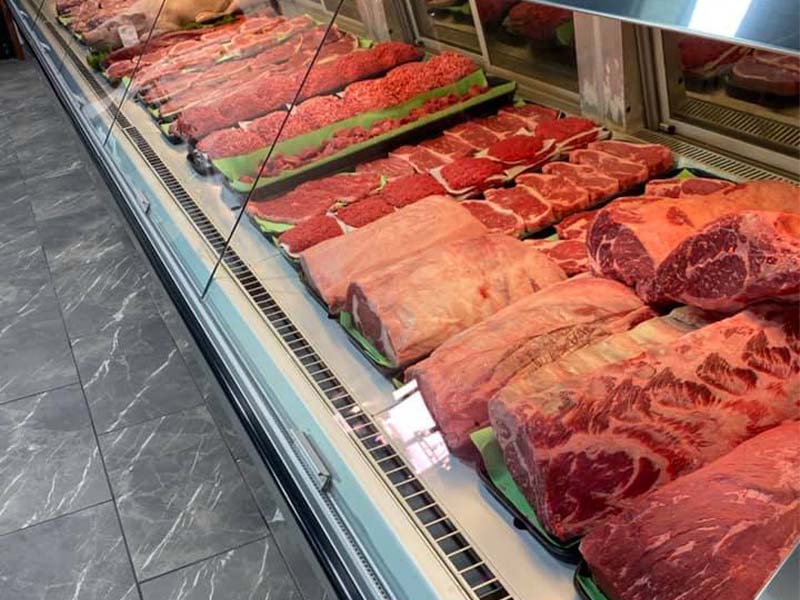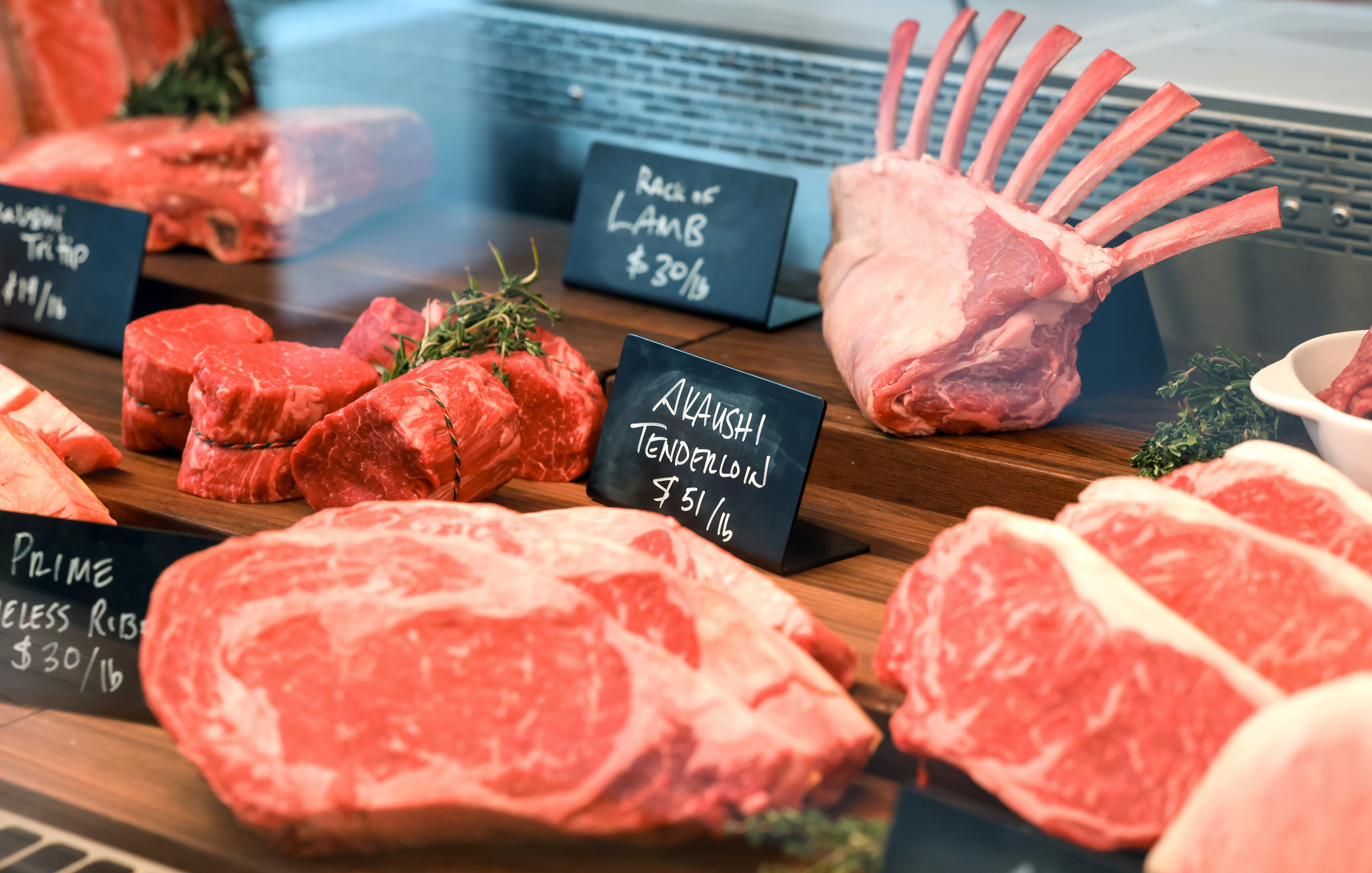What Makes Bagley Farms Meat Market Edwardsville IL Stand Apart for Meat Lovers
What Makes Bagley Farms Meat Market Edwardsville IL Stand Apart for Meat Lovers
Blog Article
Discover the Art of the Butcher's Cut in a Modern Meat Market
In the ever-evolving landscape of modern-day meat markets, the butcher's cut has actually transcended its standard roots, combining olden craftsmanship with contemporary practices. Today's butchers are not simply cpus of meat; they are experienced craftsmens who highlight sustainability and moral sourcing. Their proficiency in picking and preparing cuts customized to particular culinary needs supplies an unrivaled eating experience. Yet, what truly sets the modern butcher apart is their capacity to forge a much deeper connection in between customers and the origins of their meat. Exactly how do these masters balance practice with technology, and what implications does this have for the future of meat usage?
Evolution of Butchery Techniques
The evolution of butchery strategies reflects a rich tapestry of advancement and adaptation driven by advancements in innovation, modifications in consumer need, and a deeper understanding of meat scientific research. Historically, butchery was a craft gave through generations, with methods honed over centuries to make the most of return and taste. The commercial revolution ushered in automation, transforming typical methods and enabling large handling.
The mid-20th century saw butchery techniques additionally fine-tuned by clinical insights into muscle biology and meat aging, enhancing both tenderness and preference. Developments like vacuum cleaner product packaging and refrigeration expanded product shelf-life, allowing butchers to diversify offerings and improve top quality control. This duration additionally noted the rise of specialized equipment, such as band saws and meat slicers, which increased accuracy and efficiency in meat processing.

The 21st century has actually introduced electronic innovation into the butchery world. Computerized systems now help in monitoring pet provenance and enhancing cuts to satisfy details customer choices. Additionally, a rebirth in artisanal butchery has actually emerged, mixing typical skills with modern knowledge to satisfy consumers seeking ethical and lasting meat choices. This development highlights a vibrant interaction in between practice and advancement, meeting contemporary needs while protecting the craft's heritage.
Comprehending Meat Cuts
Recognizing the ins and outs of meat cuts is necessary for both butchers and customers seeking high quality and value. Each cut originates from a different component of the animal, presenting special flavors, textures, and cooking techniques - bagley farms meat market edwardsville il. Proficiency of these differences not just boosts culinary experiences yet also makes the most of the utility of each carcass. For butchers, exact cuts show skill and respect for the craft, guaranteeing very little waste and optimal return.

Understanding muscle make-up is critical; muscular tissues made use of extra regularly by the pet often tend to be tougher and are best matched for sluggish food preparation methods, while less-used muscular tissues, like those discovered in the loin, are more tender and perfect for grilling or roasting. Experience with these differences equips consumers to make enlightened options, improving their cooking undertakings.
Choosing Quality Meat
Selecting the ideal meat involves more than just selecting a visually appealing item from the display screen. bagley farms meat market edwardsville il. The check my blog art of picking quality meat needs a critical eye and expertise of certain characteristics that symbolize freshness and quality. Pay interest to the shade; beef should have a brilliant, cherry-red shade, while lamb needs to display a soft pink tone, and pork a light pink. This indicates the meat is fresh and hasn't been revealed to oxygen for also long.
Secondly, take into consideration the marbling, which describes the white flecks of fat within the muscle mass. Appropriate marbling is a vital sign of inflammation and taste, as it thaws during food preparation, improving the meat's juiciness. Keep in mind, higher marbling often correlates with exceptional quality cuts, such as USDA Prime.
Texture is another crucial aspect; meat must really feel strong to the touch, not slimed or excessively soft. In addition, be conscious of the fragrance. Fresh meat must have a clean, neutral odor, devoid of any sour or repulsive smells.
Combining Cuts With Cooking Methods

Alternatively, tougher cuts like brisket and chuck roast are abundant in collagen, which breaks down into gelatin when cooked slowly. These cuts are excellent for braising or slow roasting, allowing the meat to tenderize over time and develop deep, complex tastes. Cuts such as brief ribs and pork shoulder get on well with slow-cooking techniques, where prolonged cooking times transform their robust textures right into delicious dishes.
Lamb shanks and oxtail, which call for prolonged cooking to soften, are perfect candidates for stewing or slow-moving simmering. These techniques coax out rich, hearty tastes while maintaining moisture. By recognizing the unique characteristics of each cut, chefs and home cooks alike can raise their cooking developments, making certain each meal is both satisfying and memorable.
The Butcher's Function Today
Navigating the progressing landscape of the modern-day meat market, the butcher's role today expands past simple prep work of cuts. Contemporary butchers are cooking artisans, teachers, and advocates for lasting techniques. They connect the gap in between the farm and the fork by guaranteeing moral sourcing, recognizing pet husbandry, and focusing on transparency in the supply chain. This shift shows the expanding consumer demand for top quality over quantity, where provenance and pet well-being are paramount.
Along with crafting precise cuts, butchers currently involve directly with customers, using cooking guidance and tailoring choices to suit specific requirements and straight from the source choices. Their expertise in meat aging, marbling, and taste profiles empowers customers to make educated choices, boosting their culinary experiences. This individualized solution exemplifies the butcher's evolving role as a trusted advisor in the cooking area.
Additionally, butchers are pivotal in minimizing waste, making use of whole pets to develop varied items such as sausages and supplies. This extensive strategy not just values the animal but additionally aligns with contemporary sustainability goals. This way, the contemporary butcher embodies both custom and advancement, adjusting to an ever-changing market while preserving the virtuosity and integrity of their craft.
Verdict
Proficiency in comprehending varied meat cuts and quality indications equips butchers to supply enlightened recommendations, lining up specific cuts with ideal cooking techniques. By recognizing historic techniques while accepting modern demands, the butcher's role continues to be essential in today's innovative meat market.
Report this page